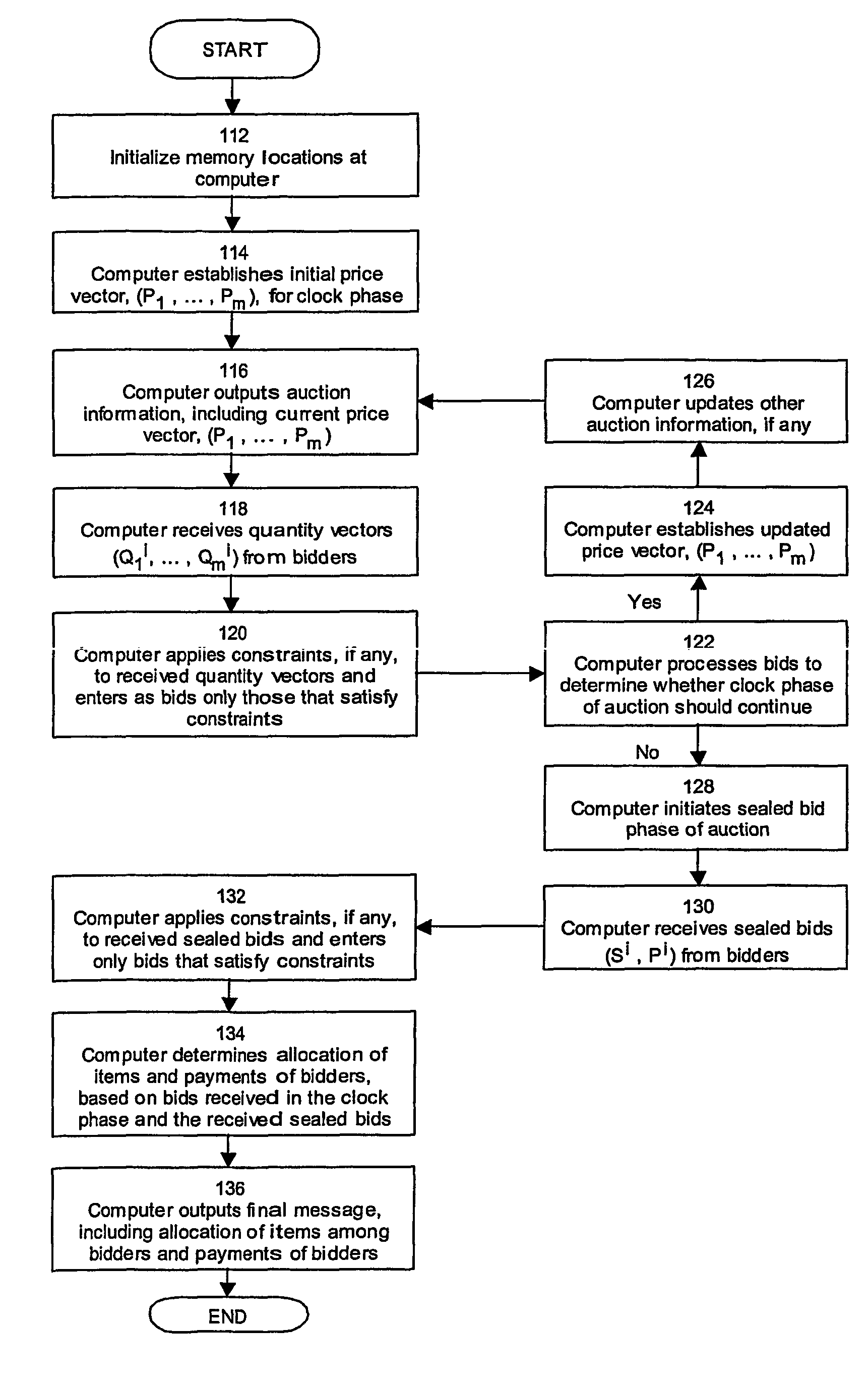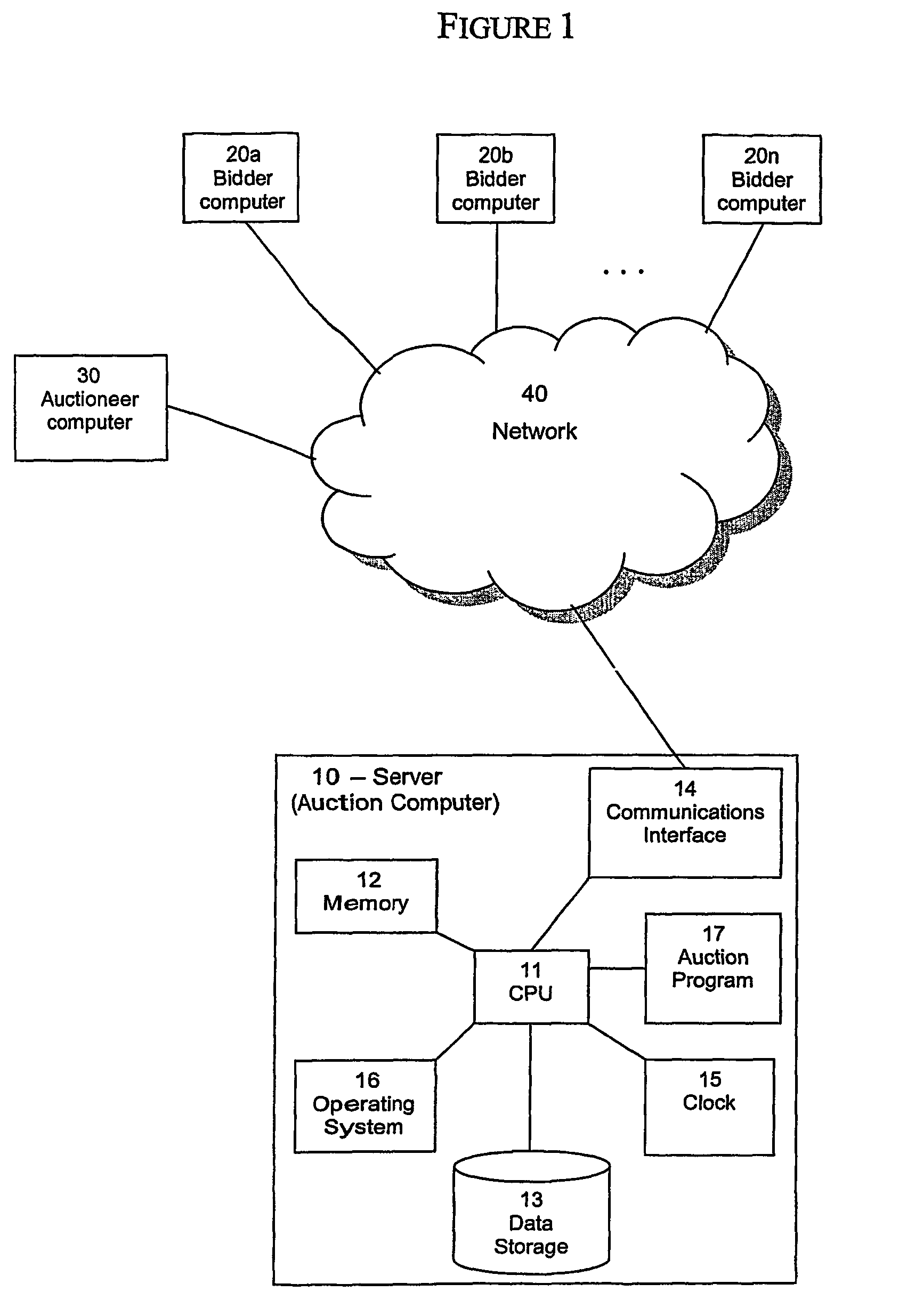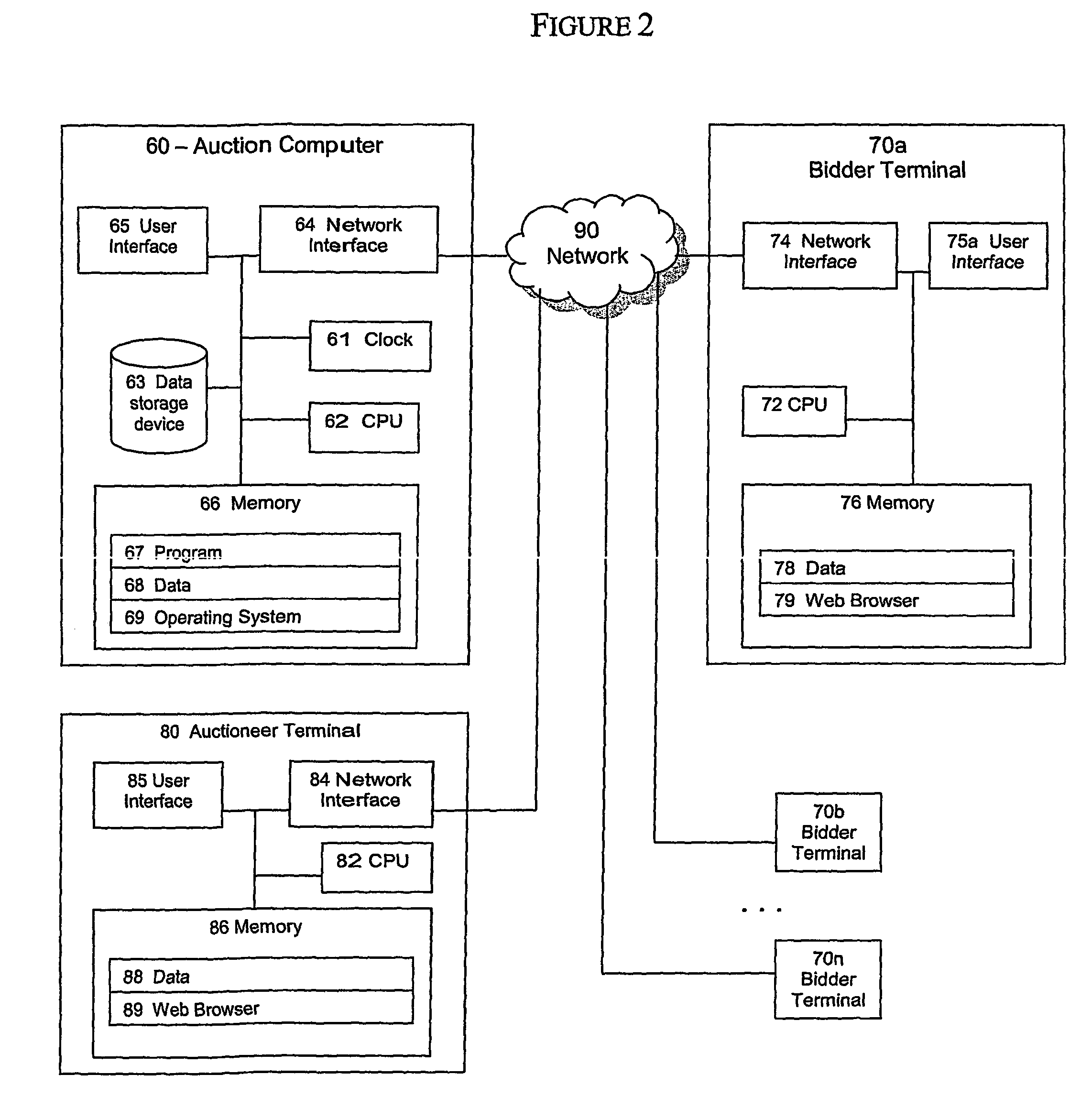System and method for a hybrid clock and proxy auction
a proxy auction and clock technology, applied in the field of computer implementation of hybrid auctions, can solve problems such as difficult technical problems in designing efficient auctions, and achieve the effect of efficient results
- Summary
- Abstract
- Description
- Claims
- Application Information
AI Technical Summary
Benefits of technology
Problems solved by technology
Method used
Image
Examples
Embodiment Construction
Overall Structure of Auction System
[0157]Earlier auction methods and systems are described in U.S. Pat. Nos. 5,905,975, 6,021,398 and 6,026,383. The following description will detail the flow of the novel features of the preferred embodiments of the present method and system for a hybrid auction combining a clock auction (or other dynamic auction) with a proxy auction (or other auction allowing package bidding).
[0158]Before describing the auction process in detail, reference is made to FIG. 1 to describe the architecture of an exemplary computer system in accordance with an embodiment of the present invention. In the graphical depiction of FIG. 1, the computer system consists of multiple bidder and auctioneer computers or terminals 20a-n and 30 communicating with the server (or auction computer) 10 over a network 40. The computers or terminals 20a-n are employed by bidders, the computer or terminal 30 is employed by the auctioneer, and the server 10 is the auction computer. The serv...
PUM
 Login to View More
Login to View More Abstract
Description
Claims
Application Information
 Login to View More
Login to View More - R&D
- Intellectual Property
- Life Sciences
- Materials
- Tech Scout
- Unparalleled Data Quality
- Higher Quality Content
- 60% Fewer Hallucinations
Browse by: Latest US Patents, China's latest patents, Technical Efficacy Thesaurus, Application Domain, Technology Topic, Popular Technical Reports.
© 2025 PatSnap. All rights reserved.Legal|Privacy policy|Modern Slavery Act Transparency Statement|Sitemap|About US| Contact US: help@patsnap.com



